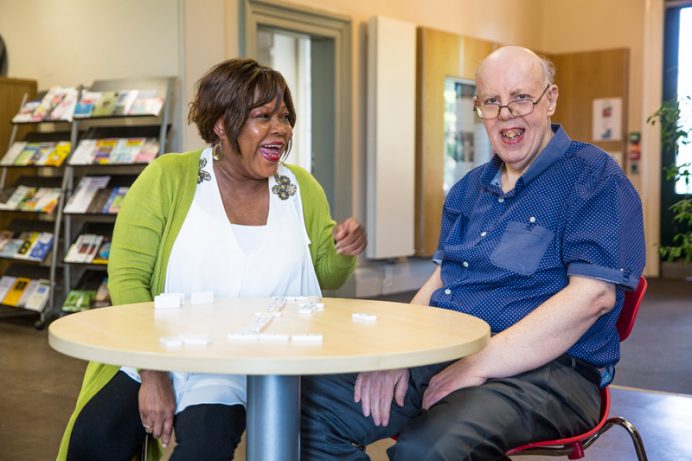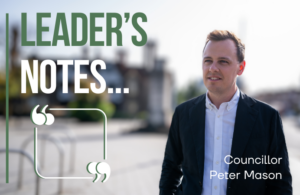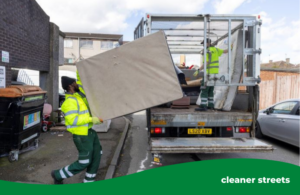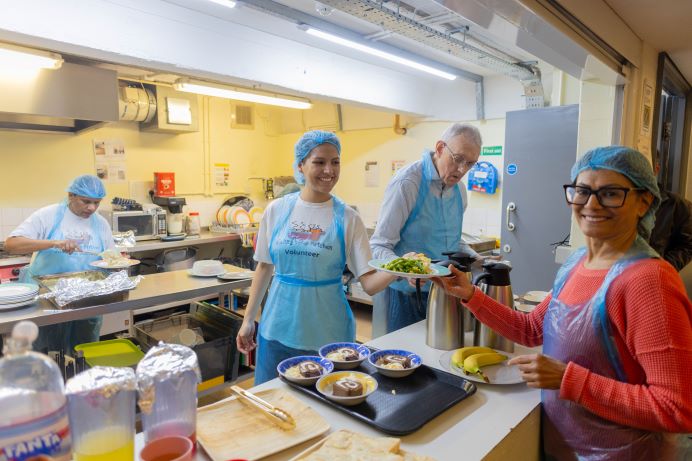It is critical that we find a way to pay for social care services, whether its home care for the disabled or dementia support.
They form the bedrock of a good society and a caring community, and protect the most vulnerable in our borough as well as enriching the lives of everyone around them (such as our Ealing Shared Lives scheme – in the picture above you can see Ealing Shared Lives carer Yvonne, and Geoffrey who she provides respite care for).
However, the Local Government Association announced recently that many councils will struggle to meet the statutory duties they have to provide social care. Indeed, the LGA also said there would be a £2.6billion financial gap nationally by 2020 – even if councils used the ‘sticking plaster’ option of putting up council tax like the government has suggested.
In London, the funding gap is estimated between £600million and £800million. And in Ealing it is set against the backdrop of seven years of budgets being cut, with the council having to find £168million in savings.
GRAPH OF DOOM
Social care services take up around 65% of our total budget and, yet, demand for these services is only growing. This means there is a social care ‘graph of doom’ developing where council cash goes down inexorably and yet social care demand goes up.
Eventually, councils will get to the point on this graph that will mean they can only afford to pay for social care and collecting bins. That is the reality staring our nation in the face unless action is taken at a national level to help fund these services.
The ongoing cuts to our funding mean that, for the first time, the council has decided it has to pass on the government’s 2% social care levy to residents in 2017/18. It will go directly towards adult social care costs and be paid as part of your council tax bill.
However, even then, this social care precept is not going to generate enough funding.
Demand for these services is growing at such a rate that the council has also had to allocate an additional £13million in 2017/18 to pay for adult social care. This council funding is five-and-a-half times more money than the 2% social care precept will raise.
FREEZING THE CORE…
We have, however, managed to freeze the core council tax again this year. This is important, too, because we understand the pressures our residents face, especially the lowest paid. The council has tried hard to prevent residents from shouldering the burden of the cuts to the borough’s funding, by freezing core council tax rates every year since 2009.
In Ealing we have been growing our way out of the financial crisis through local economic growth, boosting our council tax base and business rates. We have also made savings and tried to ensure the council is running as efficiently as possible.
So I hope you understand why it was essential for us to take this route of accepting the 2% precept this year to help plug the gap in social care funding. When Surrey County Council should have even considered a plan for a 15% rise in council tax to pay for social care, it is clear that there is a national problem that needs a national solution; and soon.
GENEROUS BOROUGH
Caring for those most in need of it is not just the preserve of the council and there are so many terrific groups and organisations in our borough extending a helping hand to people every day. I met two such groups recently – at Ealing Soup Kitchen and Refugees at Home, which you can read about on this website.
You can read more on the council tax rate and the council’s budget on the council’s main website.






